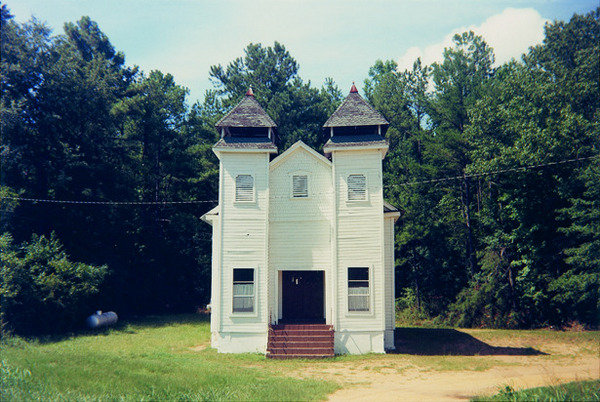William Christenberry
dal 24/9/2013 al 23/11/2013
Segnalato da
24/9/2013
William Christenberry
Fundacion Mapfre, Madrid
Abandoned houses, country churches, cemeteries and objects found in the fields have been captured by his lens for years and sometimes decades. Processes of transformation, death and occasionally rebirth, are the central themes of his extensive artistic output.

Curated by Yolanda Romero
With the collaboration of Carlos Gollonet
Coordination Marta Martín Soriano
William Christenberry (b. 1936, Tuscaloosa, Alabama) has earned a prominent place in the recent history of US photography, thanks to his unique vision of the traditional landscape of the Deep South. He is undoubtedly regarded as a pioneer of colour photography. However, Christenberry is also a versatile creator who has used other media to encapsulate the memory of a landscape that he has personally traversed and experienced over the course of his life.
Christenberry's works are unique in their evocative capacity to transform simple imagery into something monumental. His first photographs, taken with a small Brownie camera, date from the late 1950s and were initially intended to serve as references for his paintings. It was Walker Evans who, in the early 1960s, encouraged him to focus on photography as an expressive medium. However, unlike Evans, Christenberry chose to use colour at a time when it was still considered too commercial and artificial, as black-and-white was de rigueur for art photography.
From 1961 onwards, he spent year after year visiting the same places and producing images that reflect how the passing of time can have a powerful effect on all that is forgotten or abandoned. In 1974, he began to turn these images into fine, highly detailed sculptures, depicting buildings at various stages of dilapidation. Despite applying realistic proportions to these works, Christenberry never referred to them as miniatures or scale models; he considered them to be original sculptures.
Abandoned houses, country churches, cemeteries and objects found in te fields have been captured by his lens for years and sometimes decades, making personal experience, travel or, as the artist himself has noted, processes of transformation, death and occasionally rebirth are the central themes of his extensive artistic output.
Using his camera in conjunction with other media (sculpture, painting, drawing and installation art), William Christenberry has woven a thrilling tale of the Deep South: its vernacular architecture, its landscapes and its memory, but also some of the darkest and most important episodes in its history (such as the political and racial intolerance embodied by the Ku Klux Klan). The Klan Room is presented as an archive of memories of the Klan, including photographs, drawings, 'klansmen' dolls dressed in white, green, red, black and purple robes, neon crosses, glass boxes and sculptures.
Christenberry's prolific career has been featured in numerous exhibitions at many of the leading American museums, but European audiences have rarely had a chance to enjoy his work. This show is, therefore, a singular opportunity to take a closer look at his photography series and other facets of his oeuvre. The exhibition focuses primarily on the artist's photographic output, featuring over 300 photographs, most of which are of the time and taken between 1961 and 2007. Also displayed are ten sculptures and the installation The Klan Room, which consists of nearly 300 objects. A selection of advertising materials from the artist's studio rounds out the exhibition.
The catalogue will reproduce every work which features in the exhibition and detail the contributions made by exhibition curator Yolanda Romero, as well as by François Chevrier, Eduardo Cadava and Justo Navarro, among others.
ef_dashed_line
Image: Church, Sprott, Alabama, 1977. Chromogenic print from a Brownie camera negative © William Christenberry, courtesy of Pace/MacGill Gallery, New York
Press contacts:
Alejandra Fernández and Nuria del Olmo, Tel: 690 049 112 / 606 53 78 89. E-mail: alejandra@fundacionmapfre.org - ndelolm@mapfre.org
Fundacion Mapfre
Avenida General Perón, 40
28020 Madrid
Hours: Monday 2–9pm, Tuesday–Saturday 10am–9pm,
Sundays and holidays noon–8pm
Free admission



